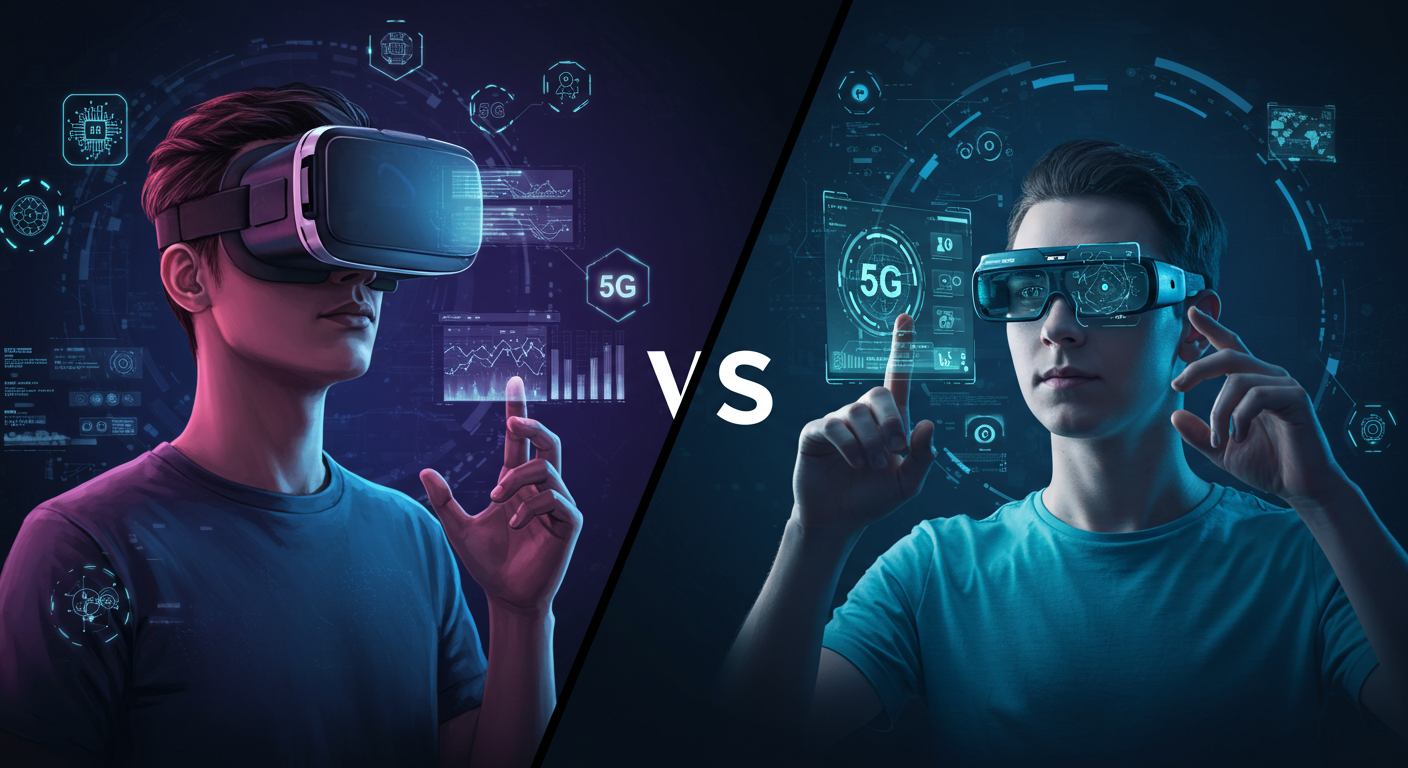As we progress through 2025, the competition between Virtual Reality (VR) and Augmented Reality (AR) remains a pivotal topic in technology circles. Both technologies are transforming how we interact with digital content, yet they offer fundamentally different experiences and applications. Understanding their distinctions, market growth, user experience, and emerging trends is essential to predicting which will dominate this year.

What Are AR and VR?
Augmented Reality (AR) overlays digital content onto the real world, enhancing your perception of your physical environment. AR is accessible through smartphones, tablets, and AR glasses, allowing users to interact with virtual objects while staying aware of their surroundings.
Virtual Reality (VR) immerses users in a fully virtual environment, replacing the real world with a simulated one. VR requires specialized headsets and controllers, isolating users from their physical surroundings to provide a deeply immersive experience.
Key Differences Between AR and VR
| Aspect | Augmented Reality (AR) | Virtual Reality (VR) |
|---|---|---|
| User Experience | Enhances real-world environment with digital overlays | Fully immersive, replaces real world with virtual environment |
| Hardware | Smartphones, tablets, AR glasses | Dedicated VR headsets and controllers |
| User Awareness | User remains aware of real surroundings | User is isolated from real world |
| Use Cases | Retail, healthcare, education, industrial applications | Gaming, training simulations, entertainment |
| Market Growth | Expected to reach nearly $40 billion by 2027 | Consumer VR market projected to grow to $18 billion by 2025 |
Market Trends and Growth Projections
The combined AR and VR market is expected to more than double from 2024 to 2028, exceeding $58 billion in value. AR is projected to lead this growth due to its broader applicability and easier integration into daily life, especially in healthcare, retail, and education sectors. VR, while more niche, continues to expand in gaming, entertainment, and professional training, with advances making headsets lighter and more affordable.
User Experience and Interaction in 2025
AR offers practical enhancements to the real world, such as virtual try-ons in retail or overlaying information on landmarks for education. It allows users to interact with both physical and digital elements simultaneously, making it versatile across industries.
VR provides immersive experiences that transport users to entirely new worlds for gaming, virtual meetings, or training simulations. However, its immersive nature requires dedicated hardware and a safe physical space.
Emerging Trends Impacting AR and VR
-
Integration with Artificial Intelligence: AI enhances both AR and VR by delivering personalized content and smarter interactions.
-
5G and Advanced Connectivity: Faster networks reduce latency and improve data handling, enriching AR/VR experiences.
-
Mixed Reality (MR): The blending of AR and VR features allows users to experience physical and virtual elements simultaneously.
-
Broader Industry Adoption: AR is gaining traction in healthcare, retail, education, and industrial maintenance, while VR remains strong in entertainment and specialized training.
Which Technology Will Dominate in 2025?
While VR offers unmatched immersion, AR’s practicality, lower hardware barriers, and wider industry applicability position it as the frontrunner for mass adoption in 2025. AR’s ability to seamlessly integrate digital content into everyday life-from shopping and education to healthcare-gives it a competitive edge. VR will continue to thrive in niche markets benefiting from full immersion, such as gaming and professional simulations.
Conclusion
Augmented Reality and Virtual Reality are both transformative technologies that will coexist and complement each other in 2025. AR is poised to dominate mainstream adoption due to its versatility and accessibility, while VR will deepen its presence in entertainment and specialized applications. Together, they are reshaping how we experience digital content and interact with the world.
This analysis is based on the latest industry data and expert insights, highlighting the evolving AR vs. VR landscape and helping businesses and consumers make informed decisions in this dynamic field

